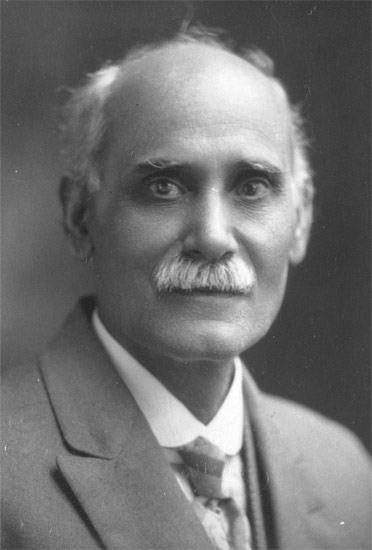 The year 1990 marked 150 years of the signing of the Treaty of Waitangi.
The year 1990 marked 150 years of the signing of the Treaty of Waitangi.
It also marked 100 years of the arrival of the first Punjabis in New Zealand.
Although there is uncertainty, it is generally believed that it was in 1890 that Bir Singh and Phuman Singh crossed from Australia to New Zealand.
Unconfirmed chronology
Just as we cannot be sure about the year of the first Punjabi arrival, we cannot know who was the first Indian to reach New Zealand or when he arrived here.
The only record that exists mentions ‘Black Peter,’ a name by which Edward Peter of Goa was known. He disembarked in 1853 and became well known in the Otago gold fields.
Shortly after this, a former employee of the East India Company, Sir John Cracroft Wilson arrived in Christchurch with a retinue of 17 Indians and established them in his residence on the Cashmere Hills. They too disappeared from view, several of them apparently deserting their master to live amongst the Maoris.
Other early arrivals are extremely shadowy characters, mainly consisting (so it seems) of seamen who settled ashore and set up various small businesses.
Official sources do not help much. The first to appear in government records were six Indians listed in the 1881 Census.
These six men were presumably of Cracroft Wilson’s contingent and there is virtually no chance that any of these were Punjabis.
The first Punjabis
Bir Singh and Phuman Singh were the first of whom we have knowledge and hence it is likely that they were the first to arrive in New Zealand.
Bir Singh was from Chirak, a large village eight kilometers south of Moga in Punjab.
A Jat by caste and a Gill by sub-caste, he travelled to Australia in the 1880s with other Punjabis who learnt about New Zealand.
His family evidently became worried about him and his younger brother, Phuman Singh, was sent in search of him. The two brothers met in Australia, but instead of returning home, decided to come to New Zealand (1890).
Bir Singh evidently did not plan his career; he married a Maori and led much of his life as a hawker (a traveling herbalist) on North Island roads.
Known to his fellow-Punjabis as Hathi (Elephant) he served during World War I as a cook at the Trentham military camp and died in Palmerston North in 1922 (or so).
Sweet businessman
Phuman Singh, however, was different. After landing in Auckland, he learned how to make sweets from a Muslim. He then moved to Wellington where he sold sweets and chutneys door to door.
He lived in a boarding house where he met his future wife, an English nurse called Margaret. They were married at the Wellington Registry Office.
Phuman Singh then moved to Wanganui.
He set up a confectionary partnership with another Muslim and later bought out his partner. He rented a second shop in Wanganui (called ‘Eureka’) and for almost 20 years sold sweets there.
Later the business extended to surrounding areas. He died in Palmerston North in 1934. He had earlier donated his copy of Macauliffe’s ‘The Sikh Religion’ to the Public Library.
In Wanganui Phuman Singh employed another Jat from Punjab, Ganda Singh, who brought his wife Daya Kaur from Punjab (1906-1907), the first woman from that state.
The sojourners
During the early years of the Punjabi presence in New Zealand (1890-1912), the number of migrants was few and most of them appeared to be sojourners.
Only 14 men and one woman have been positively identified for this period, though we can assume there were a few more men from Punjab.
Among those who left a permanent mark on the country were Khushi Ram Kapoor and his brother Hans Raj Kapoor, from Basti Shekhan (now a part of Jullundur City) who worked in successful sawmilling and country storekeeping businesses and who have left established families in this country.
From this small number of Punjabis certain facts about the early immigrants can be deduced. In the first place, a majority of the migrants were Sikhs belonging to the Jat caste. There is nothing surprising – most of the migrant Punjabis are Sikhs and most Sikhs are Jats. The Kapoor brothers, who were Khatris by caste, can be regarded as exceptions.
There were Malwais and Doabis as well.
Punjabis of this early period demonstrated an obvious occupational preference.
Like Harnam Singh Majhail most of them were hawkers, as least as their first employment. Before coming to New Zealand Ganda Singh was a hawker in Australia, and both of the kapoor brothers had set themselves up in business by working initially as greenstone hawkers.
A well-known figure around Waikato with his beard, turban and horses was Indar Singh. The only other occupation that attracted these early settlers was coal mining.
Sundar Singh, Sham Singh and Harnam Singh ‘Bhera’ were a close-knit group of Malwais who worked in Westland Mines. Ganda Singh also worked for a mining company although he did not actually mine coal.
The above article appeared in our April 15, 2006 issue. It was an extract from ‘Punjab to Aotearoa,’ written by Dr Hew McLeod and Santokh Singh Bhullar, a book released in 1990 to commemorate the centenary of the arrival of the first Punjabi settlers.






